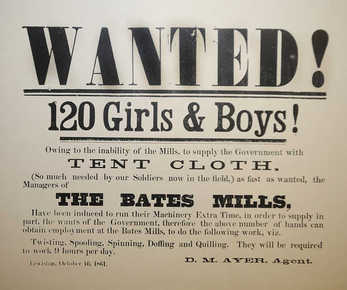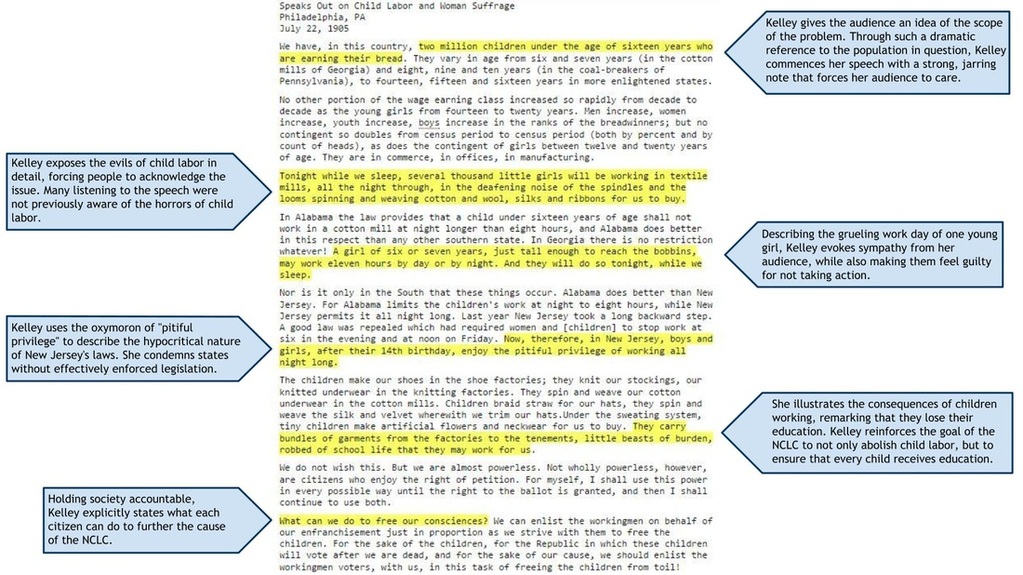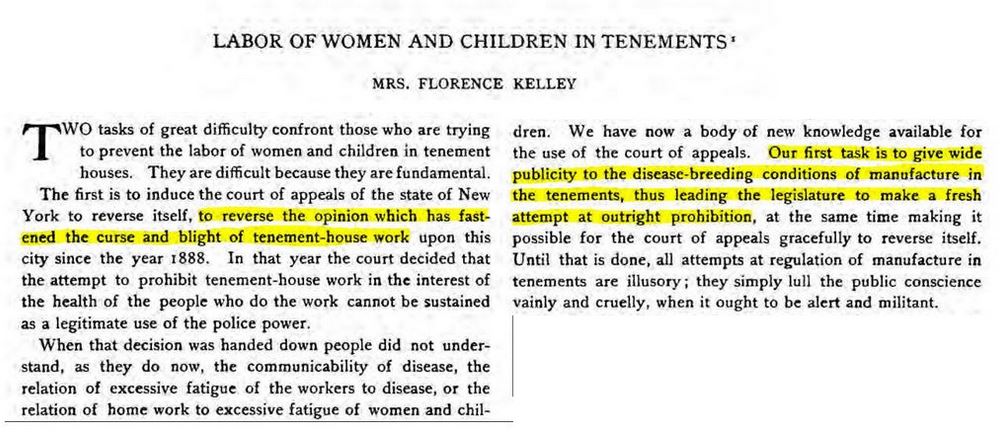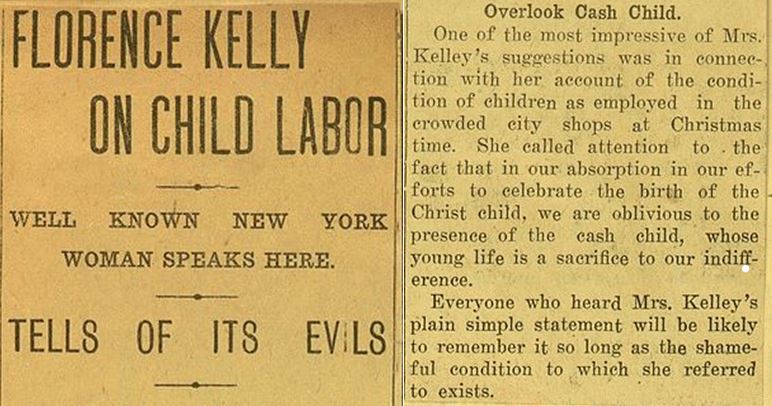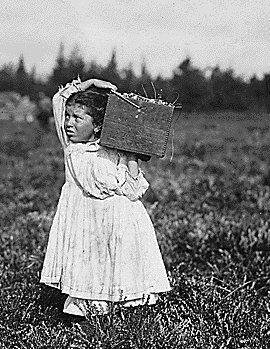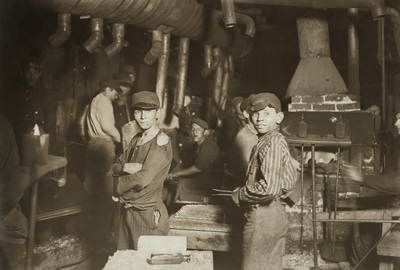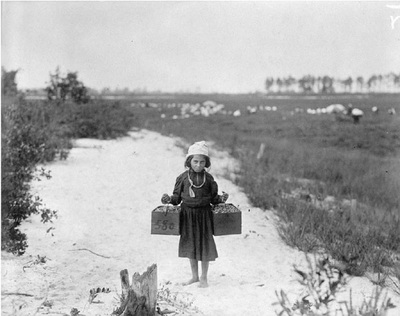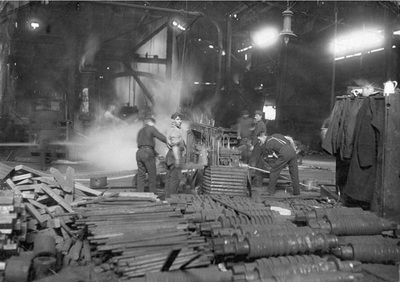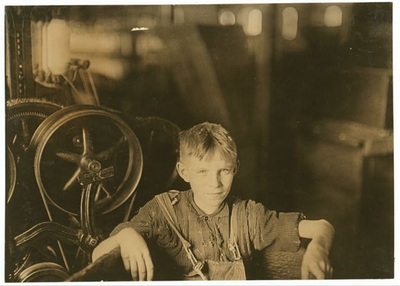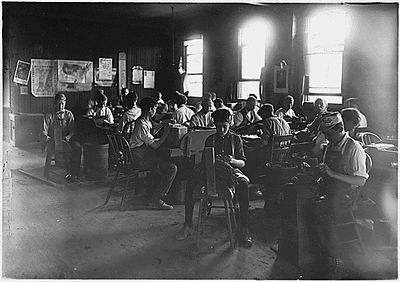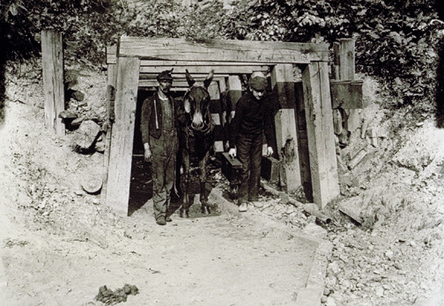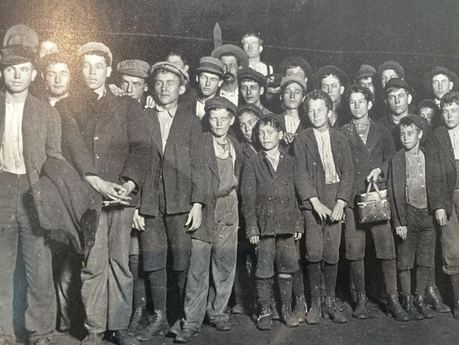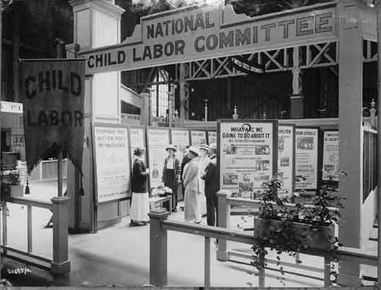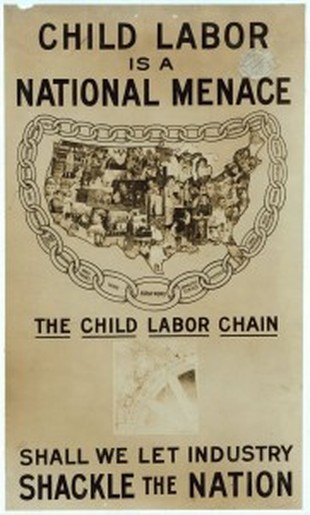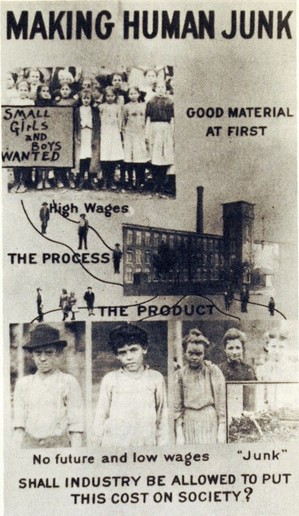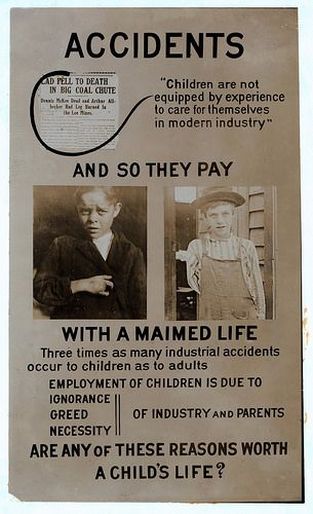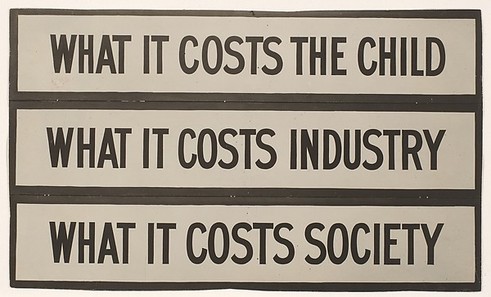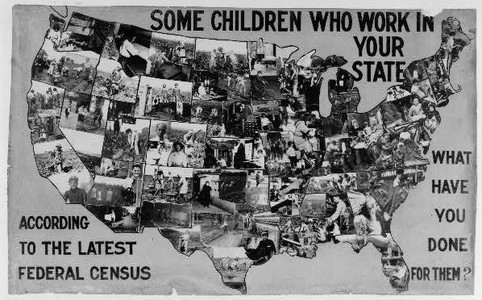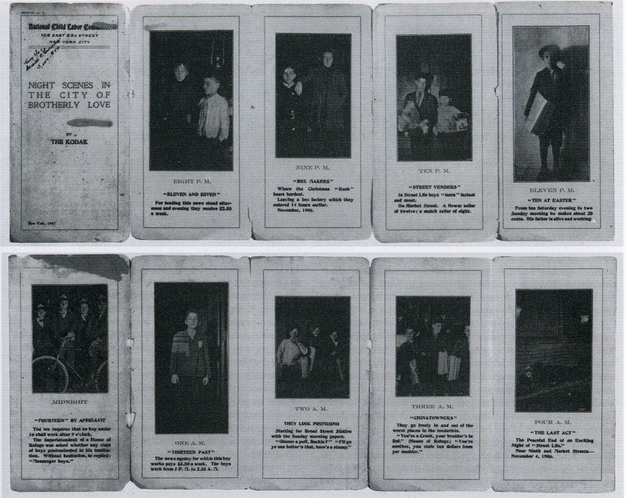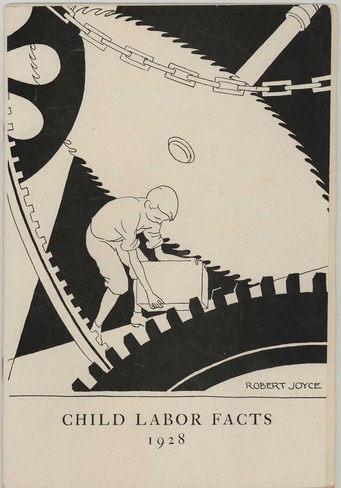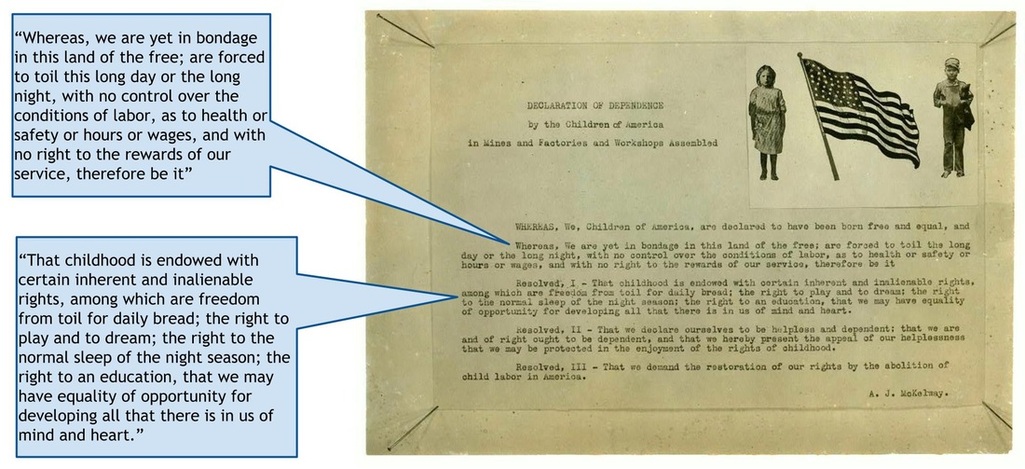Exposing Child Labor
"Child labor in this country was so widespread, and so much a part of economic reality in the early part of the 19th century, that no one looked toward or expected its abolition" -Report on the Youth Labor Force, Bureau of Labor Statistics [2000]
"Few in America had problems with children working the occasional odd job after school or with parents who expected their children to do work around the house or farm--which benefited the whole family" |
"Some people did choose to defend child labor by arguing that the work required of children was not particularly grueling or difficult. Such supporters did not truly understand the nature of many of the jobs done by child workers"
-Tim McNeese, Professor of History at York College [2007]
Florence Kelley Speaks Out Against Child Labor
Known for her firmness and fierce energy, Florence Kelley was one of the most vocal and active leaders of the NCLC. Her contribution to its leadership is evident in her powerful ability to voice the atrocities of child labor to the public.
"[She was] the toughest customer in the reform riot, the finest rough-and-tumble fighter for the good life for others, that [we] ever knew" -Jane Addams, Member of the Board of Directors for the NCLC [n.d.]
Kelley directed the efforts of the committee with her famous speeches and scholarly articles.
"It was Florence Kelley, the pioneer in this field, who first maintained that the term 'industrial accidents' as applied to children was a misnomer and insisted that we speak of industrial injuries. An accident implies something which just happens, which cannot be prevented, whereas such wholesale maiming of children by industry constitutes criminal negligence" -Gertrude Folks Zimand, Children Hurt at Work, The Survey [1932]
After the success of the work of Florence Kelley, the National Child Labor Committee recognized the importance of raising awareness in order to obtain the support needed to pass effective legislation.
"One of the first steps took place in early 1908 with the hiring of a tailor’s son from Fond du Lac, Wisconsin, a budding anthropologist and photographer, Lewis Wickes Hine. His photographs would awaken the consciousness of the nation, and change the reality of life for millions of impoverished, undereducated children"
-National Child Labor Committee [2010]
click to enlarge and view captions
"Lewis Hine was the active staff member of the NCLC whose images and work really triggered a national awareness and even worldwide consciousness of the realities of child labor and the dangers of child labor"
-Jeffrey Newman, current President of the National Child Labor Committee (Student Conducted Interview)
"To gain access to factories, mines, sweatshops, and mills, and to use his camera freely, Hine often had to disguise his real purpose...he [posed] as a fire inspector, or an insurance salesman, or an industrial photographer who was after pictures of buildings and factory machinery" |
"Entrance to the mill was extremely difficult. The man in charge absolutely refused to let me through, even as a visitor. So I waited close outside the main gate, concealed in the darkness of the woods, and at 6:00 PM...I stopped [the boys leaving the mill] and took them around the corner for a flash-powder photo. Some of the smallest boys said they had been working at the mill for several years" -Lewis Hine [1909] |
Hine's photos were meant to shock and anger those who viewed them. They were intended to mobilize public opinion and became a powerful weapon in the crusade against child labor.
"Perhaps you are weary of child labor pictures. Well, so are the rest of us, but we propose to make you and the whole country so sick and tired of the whole business that when the time for action comes, child labor pictures will be records of the past" -Lewis Hine [1909]
|
Hine's photographs were essential in all NCLC public campaigns.
"These photos traveled the nation on exhibit panels, poster-sized display boards that the reformers brought to their own conferences, to city streets, and to expositions... In these panels, Hine's images are clipped out of their backgrounds, arranged into charts, shaped into diagrams, circled and underlined and surrounded by slogans and calls to action" -Library of Congress [1954] |
These exhibit panels questioned the public's view on the costs of child labor to not only the children, but to society and the nation as a whole, ultimately forcing each individual to question their personal justification of child slavery.
A newspaper reporter who saw an exhibit of Hine's photos at a NCLC conference in Birmingham, Alabama wrote:
"There has been no more convincing proof of the absolute necessity of child labor laws...than these pictures showing the suffering, the degradation, the immoral influence, the utter lack of anything that is wholesome in the lives of these poor little wage earners. They speak far more eloquently than any written work - and depict a state of affairs which is terrible in its reality-terrible to encounter, terrible to admit that such things exist in civilized communities" [1915]
Pamphlets and Brochures
Pamphlets and brochures were an extremely useful tool in the NCLC's campaign, as they were very easily distributed.
"Made in Philadelphia at the beginning of the 20th Century, this significant document displays a sophisticated understanding of design, presenting us with an item which would easily fold up into something small and able to fit into a back pocket, a wallet or purse. In terms of dissemination and reaching an audience it is mobile, flexible and easily transported"
-Allan Sekula, artist and writer [1997]
|
Jane Addams, a member of the Board of Directors, wrote and distributed many of the NCLC's public education pamphlets.
"Jane Addams wrote prolifically on topics related to [child labor], spoke in the U.S and abroad, and was active in many vocal and national [campaigns]" -Harvard University Library Open Collections Program: Women Working 1800 to 1930 [2002] |
Featured in the pamphlets were various writings, including this "Declaration of Dependence":
As a result of the persuasive campaign led by the NCLC, a growing number of Americans were convinced that the federal government should be actively concerned with children's welfare. This started a national debate concerning the issue.
|
Thesis:
The leadership of the National Child Labor Committee piloted the social reform movement against the exploitation of children. By harnessing the power of propaganda to influence public opinion, the NCLC changed society’s perception, thus allowing for the passage of national legislation prohibiting the labor of children. The legacy of the NCLC lies not only in ending child labor, but also in establishing a precedent for future federal regulation of labor. |
Niharika Boinpally and Divya Pakianathan
Senior Group Website Word Count (Student Composed): 1166 Process Paper Word Count: 484 |
